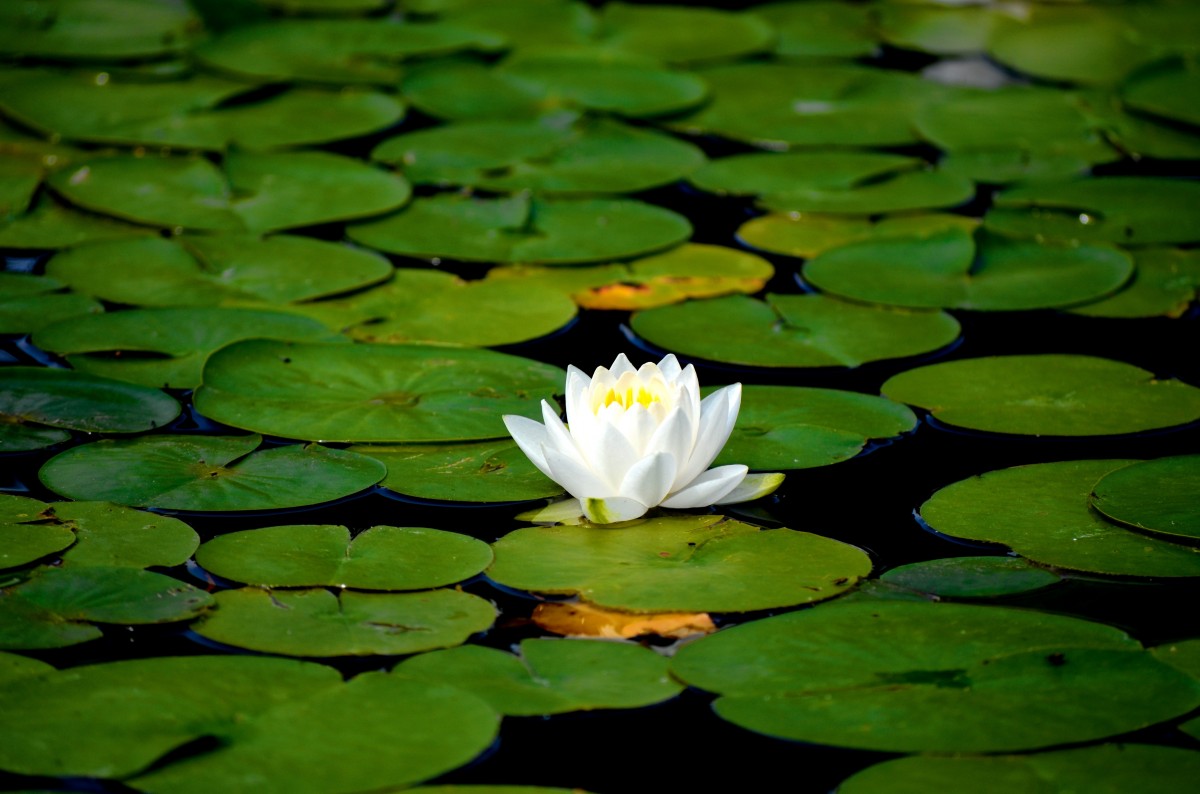
Ecological Importance
Provides excellent habitat for largemouth bass and sunfish; highly decorative----often planted in water gardens. Deer, beaver, muskrat, nutria and other rodents will consume the leaves and rhizomes of white water lily, while the seeds are eaten by ducks.
Problems
Water lilies can grow and reproduce rapidly if not maintained correctly. This occurs when there is an excess of nutrients in the pond. With smaller ponds, water lilies can completely cover the surface in just a few short weeks reducing light penetration into the pond which can kill fish and other plants. Dense growth of fragrant water-lily in shallow water areas sometimes interferes with boating and recreation.
Plant Description
White flower with rows of petals surrounding a yellow center; rooted on the bottom and floating on the water surface or extending slightly above it; surrounded by round, floating leaves that are green-colored and 6 to 12 inches in diameter; plant stem is mostly below water surface.
Hints to Identify
Familiar "lily pad" shape----floating, round leaves, green on top and green or purplish underneath; leaves have a slit from the edge to the center; flower opens in morning and usually closes by afternoon. Water lilies reproduce through both seeds and rhizome spread.
|
Homeowner Treatment Options
|
| Navigate |
| Imazapyr 4 SL |
| Renovate Max G |
| Shoreline Defense® Herbicide/Cygnet Plus Combo |
| Sonar A.S. |
| Sonar RTU |
| *Aquatic Biologists recommends implementing preventative management techniques and physical removal prior to, or in conjunction with treatment. |
Common Application Questions
Q. When is the best time to treat?
A. Water temperatures ideally should be sixty degrees and above. Generally, as long as the plants are vibrant they will respond well to treatment. Shore-Klear tends to perform best when the plant is mature.
Q. Which of the options listed works best?
A. This is a difficult question to answer. Selecting the best option depends on many factors including:
- What growth stage is the plant in?
- Water temperature.
- Surrounding area.
- Other plants near or in the treatment area.
- Size of the problem area, etc.
Q. How often do I need to treat the Lilies?
A. Lily control can last anywhere from two to four years or more depending upon adjacent lily influence. Two applications may be required initially. Navigate, and Shore-Klear kill the roots for longer control.
Q. How long before I see results?
A. Generally within ten days the edges will begin to yellow and curl. The plants will drop from the water column within three weeks.
